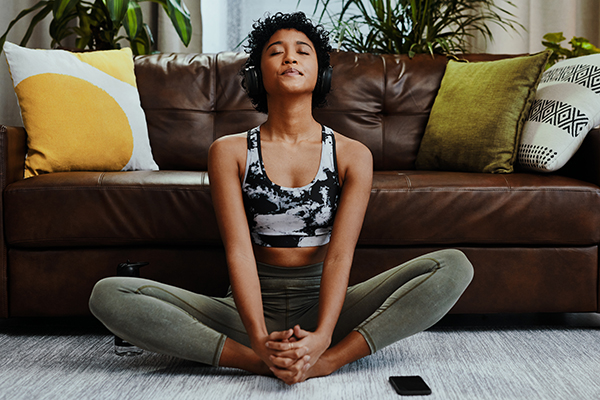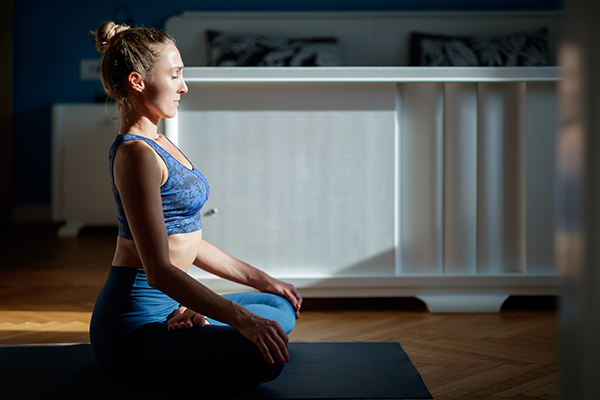7 Types of Meditation: Which One Should You Try?

With so many different types of meditation available, finding the one that works best for you can take some time.
The options are seemingly endless: You may choose to practice meditation on your own, with a teacher, in a group, or through an app.
And depending on the type of meditation you choose, your practice may include chanting, silence, chakra focus, guided sleep meditation, or even exercise.
So what type of meditation should you do? It depends on your experience level and what you’re hoping to achieve.
“Meditating every day is the best teacher,” says Sam Rudra Swartz, meditation teacher and yogi with Integral Yoga Institute.
If you’re a beginner, Swartz recommends starting with guided meditations until you find the style that resonates the most in your body and mind.
Ultimately, the best choice is the one you find most fulfilling — and the one you enjoy enough to commit to.
Here are seven meditation practices worth trying, ranging from beginner-friendly options to moving meditations you can do while running or walking.
7 Types of Meditation

1. Guided Meditation
If you’re overwhelmed and not sure where to start, guided meditation is your best bet.
“Guided meditation offers the benefit of making meditation more accessible and un-intimidating because your teacher is literally walking you through the experience, step-by-step,” says Kerry Maiorca, Yoga Alliance Board Chair, E-RYT 500, RPTY, YACEP. “And when you find a teacher with whom you resonate, just hearing the sound of the teacher’s soothing voice each time you practice makes it that much easier to slow down, relax, and focus.”
Guided meditations are widely available online, in person, or through meditation apps.
The techniques can vary — some will have you focus on your breath, others will lead you through a body scan, while others will take you on a different journey entirely, all with the purpose of calming the mind and body.
2. Mindfulness Meditation
With mindfulness meditation, the goal is to create a more present and attentive mind, while being less reactive and more engaged in the moment.
This type of meditation can be done during a designated time or throughout the day. It has three main steps: “Get quiet and still. Observe your breathing. When your mind wanders, come back to the breath,” says Maiorca.
As you pay attention to your inhales and exhales, you’ll be able to let thoughts pass through your mind as you focus on being present in the here and now.
“If your mind is occupied with the breathing, it can’t be ruminating in past or future thinking,” she adds.

3. Guided Sleep Meditation
A lack of quality sleep can affect every moment of your daily life, but calming your mind through a guided sleep meditation can help.
Guided sleep meditations aim to clear your mind and relax your body before you fall asleep, which is why they’re usually performed in bed with an audio recording from an app or website.
Also known as Yoga Nidra, a guided sleep meditation often begins with a body scan. You’ll progressively move your attention throughout the body and to its sensations.
As you do this, your body will shift towards increased parasympathetic nervous system activity — and into a state that’s more conducive to sleep.
4. Transcendental Meditation
The goal of transcendental meditation is to reach a state of enlightenment by experiencing inner calmness. It is intended to be an “effortless” type of meditation in which you don’t have to concentrate, control the mind, or even monitor thoughts.
Instead, you’ll repeat a mantra in your mind and focus on that during the session. This style of meditation is typically practiced for 20 minutes, twice a day, under the guidance of a Transcendental Meditation teacher.
5. Loving-Kindness Buddhist Meditation
Known as Metta meditation in the Buddhist tradition, loving-kindness meditation helps incorporate compassion for yourself and others.
To start, Maiorca recommends focusing on kindness, understanding, and love for yourself, and repeating phrases of compassion such as may I be happy and free.
Next, you’ll expand your thoughts and mantra out to those you love — then take it a step further and extend it to those who challenge you and then to all beings.
This type of meditation first and foremost is a gratitude practice, as well as a great first step towards shifting your relationship to self and others in real life.

6. Chakra Meditation
According to Sanskrit teachings, the body has seven chakras, which are energy centers that align with the spine and have corresponding color energies.
The chakras include:
- the root chakra at the base of the spine (red)
- the sacral chakra below the navel (orange)
- the solar plexus chakra between the rib cage and the navel (yellow)
- the heart chakra (green)
- the throat chakra (blue)
- the third eye chakra behind your forehead in the space between your eyes (indigo)
- the crown chakra at the top of the head (deep purple)
A chakra meditation focuses on the visualization of these different energy centers and parts of the body.
You’ll focus your energy at each chakra for a few minutes, one at a time, as you visualize the chakra and its corresponding color.
According to Maiorca, some chakra meditations may be used for relaxation or to support the healing process, while others may take on a more spiritual focus.
Many practitioners find the layered imagery to be creatively inspiring and grounding.
7. Moving Meditation
If sitting completely still for minutes at a time just isn’t your thing, a moving meditation may be the best type of meditation for you.
“Walking meditation is incredibly beneficial for those who find seated meditation challenging or uncomfortable,” Maiorca explains.
Moving meditation may be guided, mindful, or mantra-based. You can do it while walking, running, or hiking, or you can incorporate it into your yoga, Tai Chi, or Qigong practice.
Your focus will be on each specific movement your body is taking.
“The key is to move slowly,” Maiorca says. “Pay attention to your breath and the way the weight shifts between your feet.”
